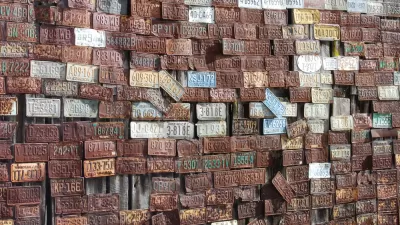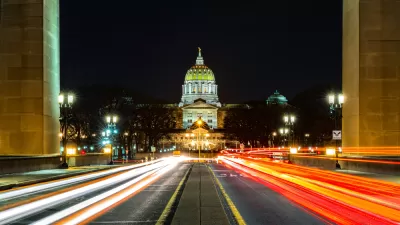Established eight years ago by a bipartisan coalition of Northeast and mid-Atlantic governors, the Regional Greenhouse Gas Initiative was the first cap-and-trade system established in the U.S. It now faces an uncertain future.
Peter Shattuck and Daniel L. Sosland pen an op-ed for The New York Times in which they explain why future of the Regional Greenhouse Gas Initiative, which over its first three years reduced annual emissions by 23 percent and raised $952 million for clean energy programs, is now in question. "The nine states in the initiative are preparing to reset the emissions cap — or the total amount of carbon dioxide that power plants can emit — and some of the proposals would allow power plants to increase the amount of carbon dioxide they dump into the atmosphere."
"Opponents of the initiative, known as R.G.G.I., argue that lower-cost has eliminated the need for the program by reducing the use of dirtier coal and . Growing investments in energy efficiency and renewable electricity have also helped to reduce emissions by cutting demand for electricity from power plants that burn fossil fuels."
"But those developments don’t argue against R.G.G.I., which determines what electricity generators may not do — namely, discharge unlimited quantities of carbon dioxide into the atmosphere. If market forces deliver emissions reductions cheaper and faster than anticipated, then states should lock in that progress with a binding cap to ensure that emissions don’t rise and that incentives for reducing pollution remain."
FULL STORY: Northeast Faces Stark Choice on Climate Pollution

Alabama: Trump Terminates Settlements for Black Communities Harmed By Raw Sewage
Trump deemed the landmark civil rights agreement “illegal DEI and environmental justice policy.”

Planetizen Federal Action Tracker
A weekly monitor of how Trump’s orders and actions are impacting planners and planning in America.

The 120 Year Old Tiny Home Villages That Sheltered San Francisco’s Earthquake Refugees
More than a century ago, San Francisco mobilized to house thousands of residents displaced by the 1906 earthquake. Could their strategy offer a model for the present?

Ken Jennings Launches Transit Web Series
The Jeopardy champ wants you to ride public transit.

BLM To Rescind Public Lands Rule
The change will downgrade conservation, once again putting federal land at risk for mining and other extractive uses.

Indy Neighborhood Group Builds Temporary Multi-Use Path
Community members, aided in part by funding from the city, repurposed a vehicle lane to create a protected bike and pedestrian path for the summer season.
Urban Design for Planners 1: Software Tools
This six-course series explores essential urban design concepts using open source software and equips planners with the tools they need to participate fully in the urban design process.
Planning for Universal Design
Learn the tools for implementing Universal Design in planning regulations.
Clanton & Associates, Inc.
Jessamine County Fiscal Court
Institute for Housing and Urban Development Studies (IHS)
City of Grandview
Harvard GSD Executive Education
Toledo-Lucas County Plan Commissions
Salt Lake City
NYU Wagner Graduate School of Public Service





























